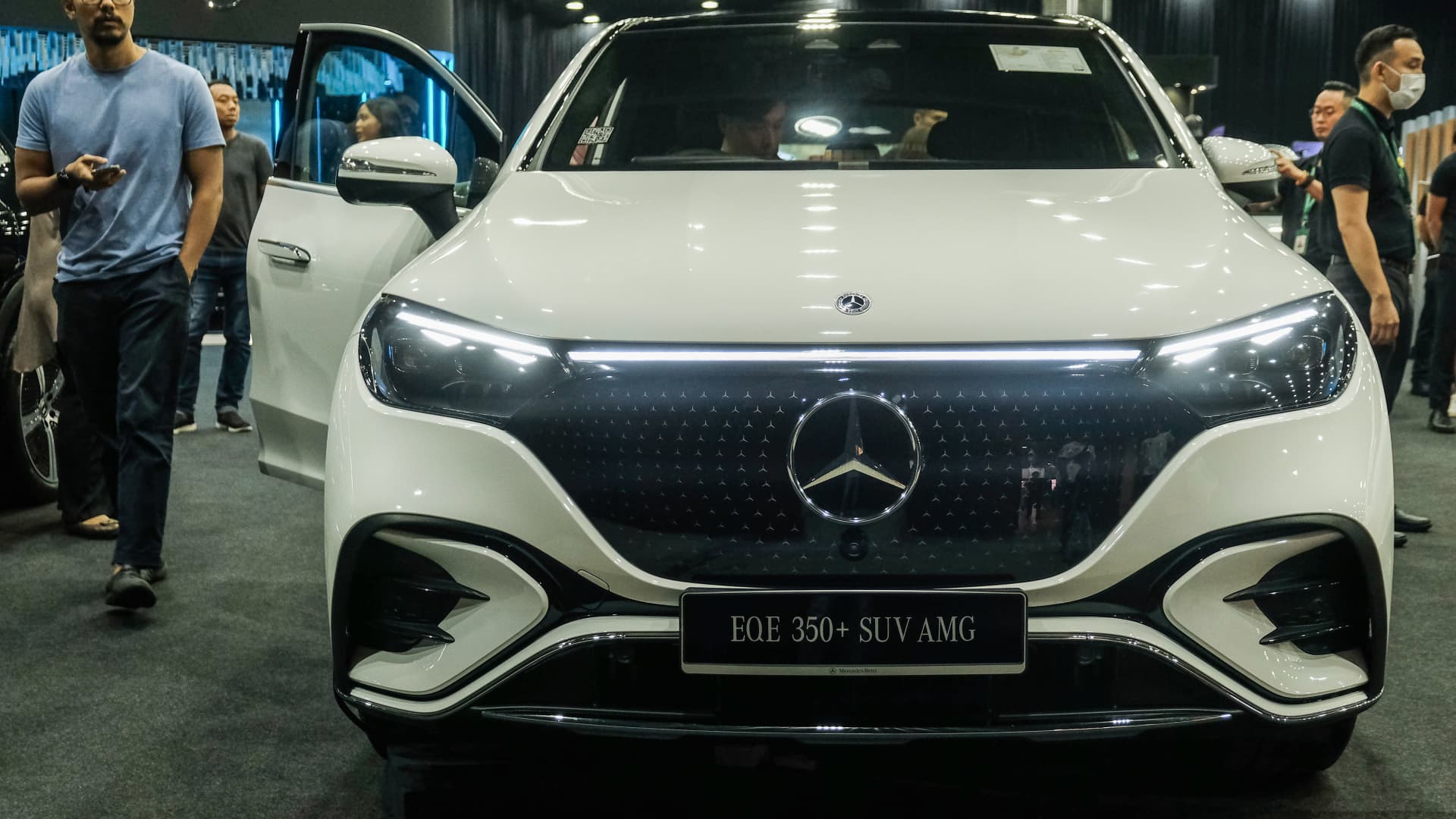Unveiling the Secrets: Why Mercedes-Benz Outshines Tesla in Driver Assistance Technology
In the fast-evolving world of automotive technology, driver assistance systems have become a critical area of focus for manufacturers. As consumers demand safer and more innovative driving experiences, two giants of the industry—Mercedes-Benz and Tesla—have emerged as frontrunners in this arena. However, a detailed comparison of their driver assistance technologies reveals that Mercedes-Benz consistently outshines Tesla in several key performance metrics. This article delves into the innovative features and technologies that contribute to Mercedes-Benz’s top ranking in the automotive industry.
The Evolution of Driver Assistance Technology
Driver assistance technology has come a long way since the introduction of basic features like cruise control. Today, systems are designed to enhance safety, improve driving comfort, and even reduce the cognitive load on drivers. Mercedes-Benz has been at the forefront of this evolution, integrating cutting-edge technology with luxurious driving experiences. Tesla, on the other hand, has garnered attention for its Autopilot feature, but its implementation and reliability have raised questions.
Key Features of Mercedes-Benz Driver Assistance Systems
Mercedes-Benz has invested heavily in developing advanced driver assistance systems (ADAS) that not only meet but exceed safety standards. Some of the standout features include:
- Active Distance Assist DISTRONIC: This adaptive cruise control system maintains a safe distance from the vehicle ahead, automatically adjusting speed based on traffic flow.
- Active Lane Keeping Assist: Utilizing cameras and sensors, this feature helps prevent unintentional lane departures by providing steering assistance.
- Pre-Safe® System: A proactive safety feature that detects imminent collisions and prepares the vehicle by tightening seat belts and adjusting seating positions.
- Traffic Sign Assist: This system recognizes and displays traffic signs, helping drivers stay informed about speed limits and other important regulations.
- Active Blind Spot Assist: Alerts drivers to vehicles in their blind spot and can even intervene by applying brakes to prevent accidents.
These features are not just add-ons; they are integrated seamlessly into the overall driving experience, providing both luxury and safety.
The Tesla Challenge: Autopilot and Full Self-Driving
Tesla’s Autopilot is often hailed as a revolutionary step in autonomous driving. However, the effectiveness of this system is sometimes debated. While it offers impressive capabilities, such as lane changing and traffic-aware cruise control, it has faced criticism for its reliance on driver supervision and the potential for over-reliance on the technology.
Moreover, the Full Self-Driving (FSD) feature, although marketed as a step towards full autonomy, has not reached the level of reliability that many consumers expect. Incidents of misjudgments, erratic behavior, and even accidents have raised concerns about the safety of Tesla’s systems.
Reliability and Safety: Mercedes-Benz vs. Tesla
When it comes to reliability, Mercedes-Benz has established a reputation built on decades of engineering excellence. The brand’s commitment to safety is reflected in its rigorous testing and validation processes. According to various independent crash tests and safety ratings, Mercedes-Benz vehicles often achieve higher scores than Tesla vehicles in categories related to driver assistance and overall safety.
In contrast, Tesla’s rapid innovation cycle, while exciting, has sometimes resulted in software glitches and updates that can introduce new problems. This inconsistency can affect driver confidence and raises questions about the long-term reliability of Tesla’s systems.
User Experience: Comfort and Intuitiveness
Another area where Mercedes-Benz excels is in user experience. The user interface for Mercedes’ driver assistance features is designed with the driver in mind, making it intuitive and easy to use. The controls are often integrated into the steering wheel and dashboard displays, providing a seamless interaction without overwhelming the driver.
In contrast, Tesla’s user interface, while modern, can sometimes be less intuitive, particularly for users who are not tech-savvy. The reliance on touchscreen controls for many essential functions can lead to distractions and is often seen as less ergonomic than traditional controls.
Customer Support and Education
Mercedes-Benz also prioritizes customer education and support when it comes to utilizing driver assistance technologies. The company offers comprehensive training sessions and materials to help drivers understand and effectively use the systems in their vehicles. This investment in customer education fosters trust and confidence in the technology.
Tesla, while providing some support, often places more emphasis on self-learning through software updates, which can leave some drivers feeling lost when it comes to maximizing the potential of their vehicles’ features.
Future Innovations: A Look Ahead
As both companies continue to innovate, the competition in driver assistance technology is likely to intensify. Mercedes-Benz is already exploring the integration of artificial intelligence (AI) and machine learning to enhance its systems further. This could lead to even more responsive and adaptable driver assistance features in future models.
Conversely, Tesla is also working on advancing its FSD capabilities, but it remains to be seen whether they can address the reliability concerns that have been raised. The automotive industry will be watching closely as these two titans push the boundaries of what is possible in driver assistance technology.
Conclusion: The Clear Winner
In conclusion, while Tesla has made significant strides in the realm of driver assistance technology, Mercedes-Benz clearly outshines Tesla with its comprehensive, reliable, and user-friendly systems. The combination of innovative features, a solid safety record, and a commitment to customer education positions Mercedes-Benz as the leader in this critical area of automotive technology. As consumers continue to prioritize safety and convenience, Mercedes-Benz is likely to remain at the forefront of driver assistance technology for years to come.
Ultimately, the choice between Mercedes-Benz and Tesla may come down to personal preference, but when it comes to driver assistance technology, Mercedes-Benz sets a high bar that continues to define industry standards.
See more Future Tech Daily

